Publicaciones Recientes CIMOC | Uniandes
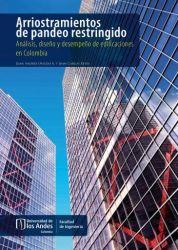
Arriostramientos de pandeo restringido: análisis, diseño y desempeño de edificaciones en Colombia
A medida que las metodologías y técnicas de diseño sismorresistente avanzan, la ingeniería estructural se enfoca tanto en evitar el colapso de las edificaciones como en evaluar su desempeño y funcionalidad ante diferentes niveles de demanda sísmica. Esto es crucial para proteger el patrimonio, el mobiliario interior y los elementos no estructurales, y para asegurar que las edificaciones indispensables funcionen durante y después de un terremoto fuerte. Los arriostramientos de pandeo restringido (APR), conocidos también como buckling-restrained braces (BRB), aún no son de uso común en la ingeniería estructural colombiana, a pesar de sus grandes ventajas; Arriostramientos de pandeo restringido. Análisis, diseño y desempeño de edificaciones en Colombia es una guía de diseño para edificaciones que los incorporen.
Este libro ofrece una visión detallada de sus fundamentos de comportamiento y aspectos técnicos de diseño clave, basados en pruebas experimentales realizadas en el país. Además, se discuten criterios de modelación, aceptación y desempeño estructural de las riostras, siguiendo normativas colombianas e internacionales y teniendo en cuenta el diseño basado en desempeño, que se fundamenta en la tolerancia al daño en elementos estructurales y no estructurales. Esta filosofía permite evaluar la fiabilidad sísmica de una edificación frente a sismos de diferentes intensidades, asegurando que la estructura cumpla con las expectativas de seguridad y funcionalidad en diversos escenarios sísmicos.

Investigating Scale Effects on Experimental Shear Strength of Earthen Walls (Adobe and Rammed-Earth)
Abstract
This study investigates the scale effects on the experimental shear strength of earthen walls, a critical parameter influencing the seismic performance of adobe and rammed-earth (RE) buildings. Recognized for their historical significance and sustainable construction practices, earthen structures require a comprehensive understanding of their mechanical behavior under shear loads to ensure effective design and preservation. This research compiles data from over 120 in-plane shear wall tests (adobe and RE), nearly 20 direct shear tests from the scientific and technical literature, and new cyclic direct shear tests performed on large cubic specimens (300 mm side length) made from the same material as a previously tested two-story RE wall. Based on the findings, this study recommends a minimum specimen cross-sectional area of 0.5 m2 for reliable shear strength testing of earthen walls in structural laboratories. This recommendation aims to prevent the unconservative overestimation of shear strength commonly observed in smaller specimens, including direct shear tests. Furthermore, the Mohr–Coulomb failure criterion outlined in the AIS-610 Colombian standard is validated as a conservative lower bound for all compiled shear strength data. Cyclic direct shear tests on nine 300 mm cubic specimens produced a Mohr–Coulomb envelope with an apparent cohesion of 0.0715 MPa and a slope of 0.66, whereas the full-scale two-story wall (5.95 × 6.20 × 0.65 m) constructed with the same material exhibited a much lower cohesion of 0.0139 MPa and a slope of 0.26. The analysis reveals significant scale effects, as small-scale specimens consistently overestimate shear strength due to their inability to capture macro-structural behaviors such as compaction layer interactions, construction joint weaknesses, and stress redistributions. Based on the analysis of the compiled data, the novelty of this study lies in defining a strength reduction factor for direct shear tests (3.4–3.8 for rammed earth, ~3.0 for adobe) to align with full-scale wall behavior, as well as establishing a minimum specimen size (≥0.5 m2) for reliable in-plane shear testing of earthen walls, ensuring accurate structural assessments of shear strength. This study provides a first approach to the shear behavior of unstabilized earth. To expand its application, future research should explore how the scale of specimens with different stabilizers affects their shear strength.
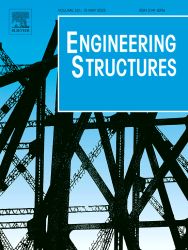
Characterizing the free-vibration response of a two-span rocking bridge with free-standing columns
Abstract
For accelerated bridge construction (ABC), replacing traditional emulative connections of precast elements with simpler discontinuities may lead to more resilient structures with reduced expected damages after strong seismic events. This paper comprises novel free-vibration tests of a 1:10 scale two-span rocking bridge with free-standing columns with proper geometrical and dynamic similarity. The two spans induced in the model the interaction between frames with different tributary masses, as would be expected for a realistic bridge. To excite the bridge uniformly, the experimental protocol consisted of forty-nine incremental sinusoidal ground motions that were interrupted, letting the bridge vibrate freely to rest. The results were compared with six analytical models. The results showed that the structure remained undamaged for the free-vibration tests after drifts up to 6 % and did not wobble unrestricted. The results were used to obtain the dynamic properties of the system and their variation to displacement increments. Construction imperfections induced the model to rock for all excitations, including low-intensity excitations, and to vibrate with periods different from those of theoretical equations at low displacements. This behavior was critical in the comparison between experimental results and the estimates from analytical models. These findings demonstrate that rocking bridges are a suitable system to control structural damage during seismic events despite the apparent variability of the behavior under realistic conditions. However, the design of these structures must account for the effects of construction imperfections at the rocking surface. The experimental results are openly available for download in the DesignSafe Data Depot using this DOI https://doi.org/10.17603/ds2-znfv-8t55.
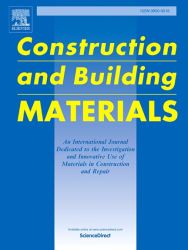
Behavior of bamboo properties as a construction material under artificial aging and weathering acceleration factors
Abstract
Natural construction materials, such as bamboo, are highly susceptible to degradation when exposed to outdoor weathering. Understanding their long-term mechanical behavior is essential not only for structural design but also for effective aging protection and maintenance planning. This study investigates the physical, microstructural, and mechanical behavior of Guadua angustifolia Kunth bamboo under weathering conditions, focusing only on abiotic factors that accelerate its aging process. Both untreated and coated bamboo samples were subjected to accelerated weathering cycles, ranging from 625 to 7500 h. Degradation due to abiotic aging factors was assessed through changes in color, Fourier-transform infrared spectroscopy (FTIR), scanning electron microscopy (SEM), and tensile mechanical properties at various stages of weathering. Using data from these accelerated tests and existing experimental findings, a modified Peck-Arrhenius model was employed to propose an equation for estimating bamboo weathering acceleration factors. These factors were then applied to different global locations where bamboo is commonly used as a structural material, offering critical insights for sustainable construction practices, maintenance strategies, and the prediction of bamboo’s long-term performance across diverse environmental conditions.

Mechanical properties of masonry using artificial neural networks
Abstract
Non-engineered construction constitutes a significant portion of the existing housing stock in Colombia and other South American countries. These masonry constructions frequently lack technical and engineering characteristics, affecting their performance under seismic and gravitational loads. The assessment of their mechanical properties, such as compressive strength, modulus of elasticity, shear strength, and shear modulus triggers challenges when using existing models, as experimental results of unreinforced masonry houses often deviate from these theoretical models. To address these challenges, machine learning models using neural networks were proposed to predict masonry mechanical properties. To develop the neural networks, a comprehensive database of experimental results from various tests conducted in Colombia was complied, categorizing data into four main masonry types based on material and masonry units: (1) horizontally hollow clay bricks, (2) vertically hollow clay bricks, (3) solid clay bricks, and (4) vertically hollow concrete bricks. These categories encompass the prevalent types of masonry units used in unreinforced masonry constructions. The neural networks developed herein demonstrate superior performance when compared to existing predictive models in the literature, facilitating their application in structural analyses of masonry. In addition, recalibrated equations were proposed to better reflect the properties of masonry of unreinforced constructions. A user-friendly application was developed to enable practical use of both the database and the predictive models, supporting researches and engineers in characterizing masonry for seismic resilience and retrofitting.

Seismic Performance of a 1:4 Scale Two-Story Rammed Earth Model Reinforced with Steel Plates Tested on a Bi-Axial Shaking Table
Abstract
During the 16th and 17th centuries, Latin American cities adopted earthen construction techniques from European colonizers. As a result, rammed earth (RE) buildings now occupy an important place in Latin America’s cultural heritage. However, earthquakes around the world have shown that unreinforced earthen constructions are highly vulnerable. For several years, researchers in northern South America have been proposing a technique that consists of installing confining steel plates (or wooden elements) on both sides of the RE walls to form a grid. This system has shown excellent performance in controlling seismic damage and increasing strength and ductility capacity. Although researchers have tested full-scale one- and two-story earthen walls under pseudo-static loading in the laboratory, and one- and two-story earthen walls at 1:1 and 1:2 scales on uniaxial and biaxial shaking tables, the behavior of a complete reinforced module (one- or two-story) on a shaking table has never been assessed. The present study presents the results of shaking table tests performed on two-story RE modules at 1:4 scale. The experimental data indicate that the retrofit system with confining steel plates was effective in reducing the seismic damage of earthen constructions. In addition, the comparison of the results of the 1:4 scale tests with the 1:2 and 1:1 scale tests previously conducted by the researchers shows that the acceleration levels of the equivalent prototypes are in the same order of magnitude for the three scales.
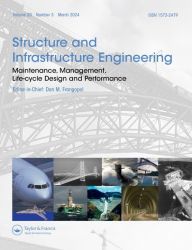
A decision-making framework for school infrastructure improvement programs
Abstract
School infrastructure affects the quality of education and the performance of children and youth. Natural hazards such as earthquakes, hurricanes, floods, and landslides, threaten critical infrastructure such as school facilities. Additionally, problems related to the functionality of these facilities are common in the region, such as an inadequate number of classrooms, poor lighting, and insufficient ventilation, among others. At a national level, the decision-making process to prioritize schools’ interventions becomes even more challenging due to limited resources and lack of information. Furthermore, there is a lack of a systematic approach to address the need of improving existing infrastructure taking into consideration limited resources. Considering this, a novel decision-making framework is proposed that prioritizes school infrastructure investment with limited budgets, using clustering procedures, a multi-criteria utility function, and an optimization component. This framework allows better public policy decisions and benefits students in terms of buildings quality with a multi-criteria perspective, improving both safety and functional conditions. The framework is illustrated with a case study applied to the public-school infrastructure in the Dominican Republic.
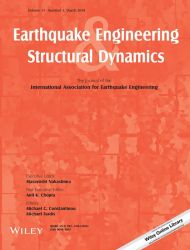
Comprehensive evaluation of target spectra for selecting bidirectional ground motions in nonlinear response history analysis of frame buildings at far‐field sites
Resumen
An ensemble of bidirectional ground motions (GMs) is required as input for nonlinear response history analysis (RHA) of complex 3D structures. In building codes, an ensemble of GMs is often developed from a given design spectrum, or target spectrum. In the research literature, several target spectra have been proposed for such intensity-based assessments. The present study aims to comprehensively evaluate different options for developing target spectra to select bidirectional GMs as inputs to nonlinear RHAs of 3D structural systems.
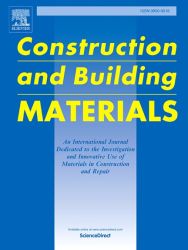
Strengthening of historical earthen constructions with steel plates: Full-scale test of a two-story wall subjected to in-plane lateral load
Abstract
The Spanish conquerors that came to Latin America built earthen dwellings (one- and two- stories). In this way, construction with earthen materials was introduced in the history and the cultural heritage of the Northern South American territory. Unfortunately, past earthquakes have shown that historic earthen buildings are highly vulnerable. Research on this subject has focused on the evaluation of seismic retrofitting alternatives, especially in one-story earthen walls without openings, or studying reduced-scale earthen models.
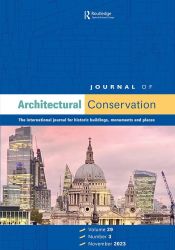
An approach to Colombian Andean earthen architecture in urban environments: a case study of Bogotá Historic Centre
Abstract
Earthen buildings are a fundamental part of Colombia's historical architectural heritage. This heritage has been deteriorating due to a lack of knowledge, disconnection from cultural roots, and because of the structural vulnerability of these buildings, mainly caused by earthquakes and moisture. Throughout recent years, research has been carried out in order to structurally intervene and preserve these buildings, however, within the Colombian context there are few studies regarding the location, distribution, and main characteristics of earthen buildings. Therefore, this research is presented from general to specific, beginning with an approach to Andean earthen architecture in Colombia, and ending with a case study of an urban environment: The Historic Centre of Bogotá (HCB).
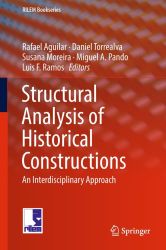
Experimental Assessment of Three Simple Techniques for the Seismic Retrofitting of Heritage Earthen Structures
Abstract
An experimental program was conducted to evaluate simple retrofitting techniques that could preserve historical buildings in Colombia. This paper presents experimental results from 28 full-scale adobe and RE walls subjected to in-plane and out-of-plane lateral cyclic loading, overturning, and shake table excitations. Geometries included solid walls, wall piers, flanged/corner walls, and walls with openings. Specimen dimensions were 0.4m or 0.6 thick, 1.25 to 7.0m long, and 1.8 to 3.45m tall.
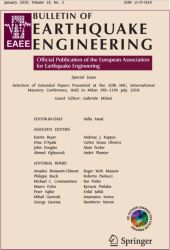
Bi-axial shaking table tests to evaluate the seismic performance of two-story rammed-earth walls retrofitted with steel plates
Abstract
Worldwide, unreinforced earthen buildings have shown poor performance during earthquakes, causing deaths and loss of property. The Spaniards that conquest the Americas built with earthen materials for about four centuries and therefore, there are a large number of historic buildings in the northern Andean zone of South America.